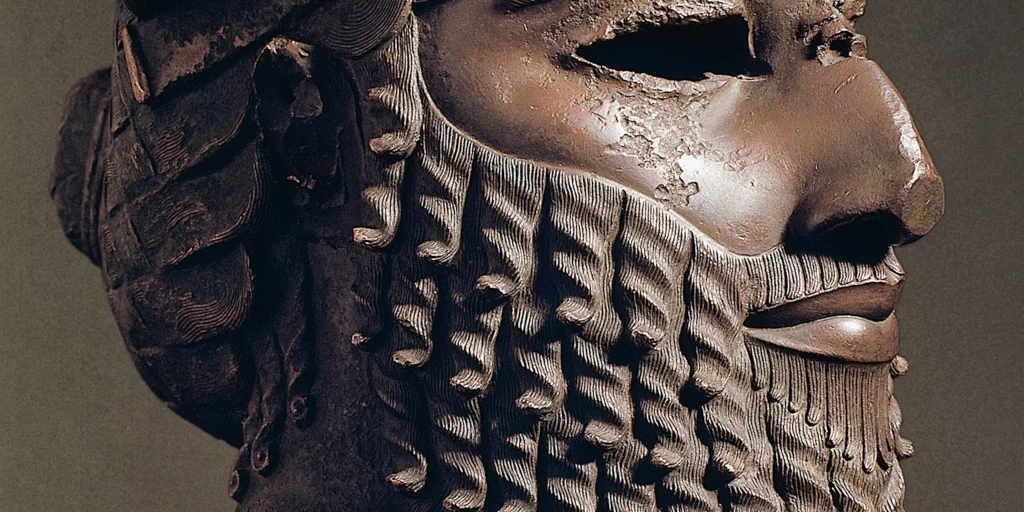In the dusty, rugged history of the Wild West on the American frontier, there are dozens of larger-than-life names that have legends attached to them. A lot of these infamous figures were outlaws, but not all of them. One, Wild Bill Hickok, was a lawman and no less deadly for it.
Known for daring gunfights, gambling, and a strong sense of justice, Wild Bill Hickok helped bring some of the roughest areas in the Wild West under control.
Wild Bill did everything from serving in the Civil War to killing a bear with nothing but a knife. Here, we will step into the Wild West to unravel the life of Wild Bill, and who could have possibly killed such a legend.
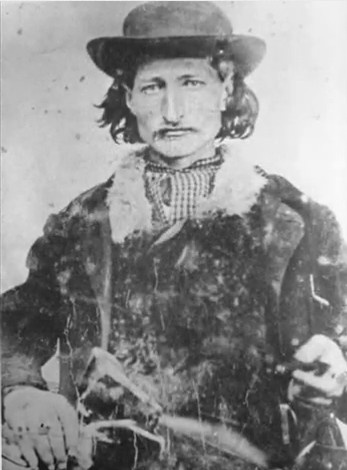
Early Life and Adventures Before the War
James Butler Hickok was born May 27, 1837, in Homer, Illinois (now Troy Grove, Illinois). His parents, William Alonzo Hickok and Polly Butler, were farmers. Beneath that identity, though, was a second life.
Wild Bill’s parents were also abolitionists, and their home was used as a stop on the Underground Railroad. This was before the Civil War, and smuggling slaves was a death sentence if caught.
When Wild Bill was just 15, his father died. Some sources claim that he was killed because of his work on the Underground Railroad. Regardless of how he perished, he left behind a wife and six children.
Following a fight with another young man, Wild Bill Hickok left his hometown and ended up in Kansas. By this time, Bill had already proved himself to be a talented marksman, earning him a place in General James Lane’s Free State State Army of Jayhawkers, an antislavery movement.
From there, he would end up acting as a bodyguard for the army’s leader.
The Legend of Wild Bill Hickok
After his time with the Jayhawkers, Wild Bill would spend some time as a constable in Monticello Township, Kansas, before joining the freight portion of the Pony Express.
While working this job, Wild Bill added the first story to his legend. In 1860, he encountered a bear blocking the road and fired a shot that failed to kill the bear. A struggle ensued, which ended up with Bill slitting the bear’s throat.
His hand-to-hand fight with the bear severely injured him. He had to spend some time recovering before moving on to his next adventure.
The McCanles Shooting
The following year, 1861, the Civil War was in full swing when Wild Bill would have his next confrontation. He was at the Rock Creek Station with station manager Horace Wellman, an old friend. Then, David McCanles arrived to try and retrieve a debt from Wellman.
A shootout commenced, with Hickok fighting alongside his friend and ultimately coming out on top. The McCanles shootout would be embellished greatly upon retellings. It got to the point that the story being repeated was that Hickok fought McCanles and his men off single-handedly, further adding to his lore.
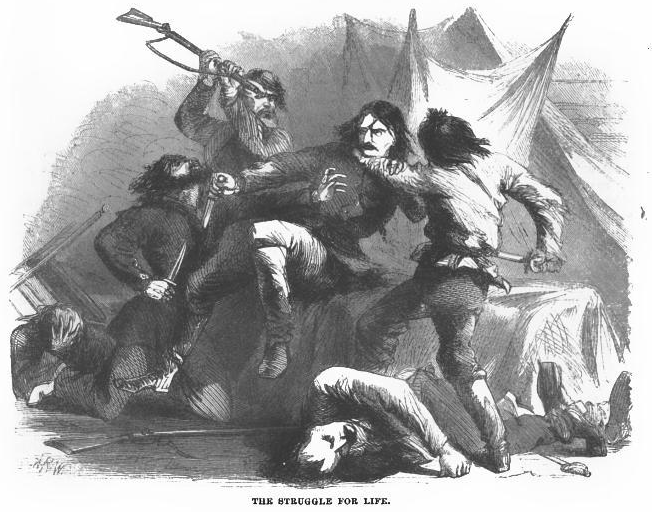
The Civil War
Fighting for the Union, Wild Bill Hickok worked as a teamster and eventually a wagon master before being discharged. It was during his time with the Union Army that he would earn his nickname, Wild Bill Hickok.
In 1862, he once again joined James Lane’s fighting brigade to continue participating in the fight against the Confederacy.
Wild Bill Hickok: Sharpshooter, Gunslinger, and Sheriff
Once the war was finished, Wild Bill wasn’t ready to settle down. He continued moving throughout the country, building his legend as a gunslinger and sharpshooter until his name was legendary.
He occasionally had run-ins with the law. He was arrested for the murder of fellow gunfighter David Tutt, but he was quickly acquitted of the crime and released.
Finally, in 1869, Wild Bill took a position as a lawman, becoming the sheriff of Hays City, Kansas.
After that, in 1871, he would take a job as the marshal of Abilene, Texas, a town known for its cattle drives and being a hangout for several outlaws. Abilene was rough and needed a skilled, unshakeable gunman to bring it under control.
Wild Bill Hickok was the right man for the job, and he had no problem killing to get his point across. For a time, the town was safer than it had been before, but like most jobs that Wild Bill took, this one didn’t last for long.
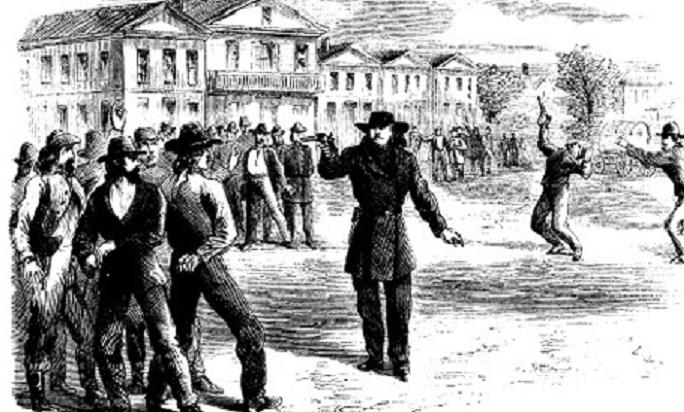
Accidental Killing of Deputy Marshal Mike Williams
While working as the marshal of Abilene, Wild Bill ruled with an iron fist. Any shootings within city limits were quickly taken care of by Bill, even if they led to shootouts with the marshal, which he always won.
One such incident would end up being the end of Wild Bill’s career as a marshal. On October 5, 1871, Wild Bill would come upon a brawl outside of Bull’s Head Saloon, owned by a man named Phil Coe. During the fight, Coe fired his gun, which caused Hickok to call for his arrest.
Coe turned his weapon on Hikcok, but Wild Bill was faster. Bill quickly dispatched Phil Coe but heard someone approaching him from behind. Thinking he was being ambushed, Wild Bill whipped around and fired again, but it wasn’t an enemy approaching him. Instead, it was his deputy marshal, Mike Williams.
Wild Bill had killed the innocent man. As a consequence, he was relieved of his position and left town.
Later Life and the Death of Wild Bill Hickok
After the accidental killing of his deputy marshal, Wild Bill Hickok gathered a small group of cowboys and native Americans to put on a show. Wild Bill and the group traveled to Niagara Falls where they aimed to put on an outdoor show titled The Daring Buffalo Chase of the Plains. It was, unsurprisingly, an utter failure.
Along with the group of men he had gathered, Wild Bill incorporated six buffalo, a monkey, and a bear into the show. Very few people were interested in an outdoor show, and the final nail in the coffin was when the buffalo broke free.
Wild Bill had become frustrated that the animals wouldn’t act and fired a shot into the air, which spooked them. The buffalo broke out and chased audience members. The show was closed not long after.
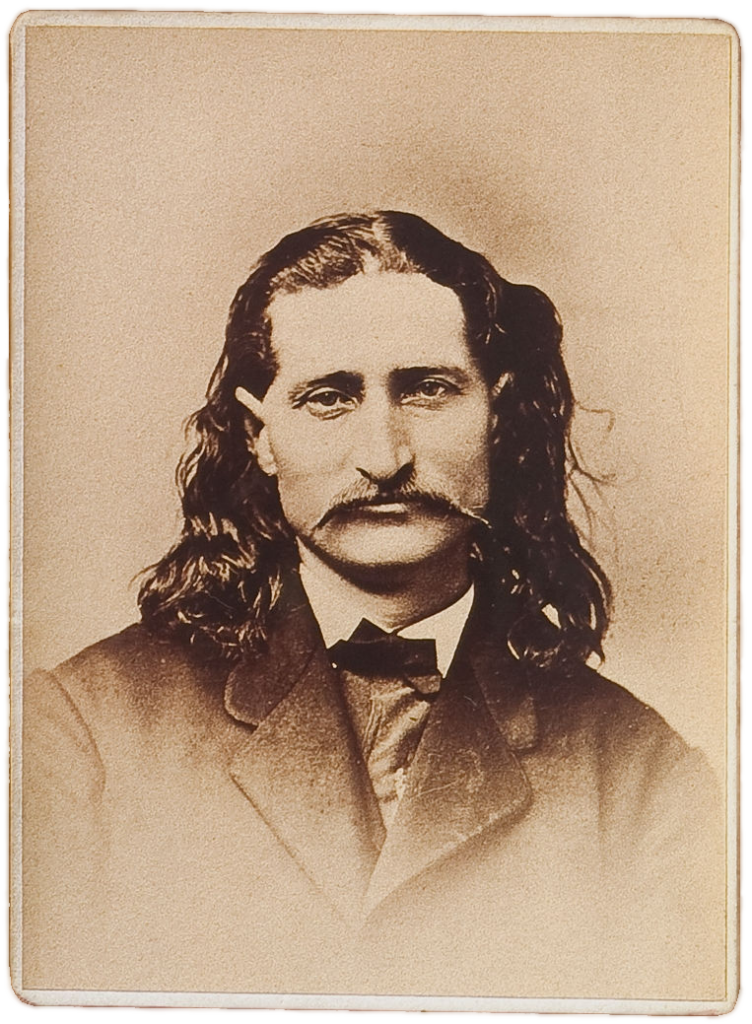
Why Did Wild Bill Hickok Get Shot?
Wild Bill Hickok had been a gambler most of his adult life, and he would be playing poker at the end of it.
On August 2, 1876, Wild Bill was in the midst of a poker game when a man named Jack McCall entered. Bill had his back to the door, and McCall called out, “Damn you, take that!” before firing off a shot. It hit Bill in the back of the head at point-blank range, killing him instantly.
The altercation occurred because McCall had lost to Bill in a poker match the day before. At the time of his death, Wild Bill Hickok was holding four cards–two black aces and two black eights. From that day forward, those cards would come to be known as the dead man’s hand.
How Old Was Wild Bill Hickok When He Died?
Sadly, Wild Bill Hickok was only 39 when he was shot and killed. Despite his young age, he had been suffering from vision problems for a few years, maybe leading to his slow reaction time when McCall entered the saloon.
Either way, Wild Bill Hickok went down in history as one of the most precise and deadly sharpshooters to ever live, and in his 39 years, had enough excitement for dozens of lives.
References
“Wild Bill Hickok”-Joseph J. Di Certo
https://www.britannica.com/biography/Wild-Bill-Hickok
“Wild Bill Hickok, Buffalo Bill Cody and the Grand Buffalo Hunt at Niagara Falls,”-Joseph G Rosa,
https://history.nebraska.gov/wp-content/uploads/2022/10/NH2005BuffaloHunt.pdf

